Quantum Coalescence and God's Army - Twelve Legions of Angels
A Unified Theory of Cosmic Order
The Quantum Divine
Throughout human history, our conceptions of divinity have evolved alongside our understanding of the universe. From the multifaceted pantheons of polytheism to the singular, masculine deity of monotheism, and from the all-encompassing divine reality of pantheism to the distant creator of deism, humanity has continuously reimagined its relationship with the transcendent.
This essay continues the development of our new theoretical framework —Quantum Coalescence1 — that bridges ancient spiritual intuitions with contemporary quantum physics, suggesting that the fundamental building blocks of reality (information as qubits) coalesce into classical outcomes under the influence of consciousness.
Expanding upon Federico Faggin's Quantum Information Panpsychism (QIP), we explore how consciousness might function as a "non-physical operator" guiding quantum states toward specific classical realities. Within this framework, we reinterpret biblical references to angelic hierarchies — particularly the "Twelve Legions of Angels"— as specialized resonances of consciousness that govern different aspects of reality.
These "commutators," as they are called in quantum mechanics, evoke a dynamic system of divine governance operating at the quantum level, one that bridges ancient religious intuitions and modern scientific understandings.
This synthesis offers a path toward what we might call the “God of Cosmic Light,"— a conception of divinity that honors the insights of historical religious paradigms while embracing the mystical implications of quantum mechanics for our understanding of consciousness, reality, and human potential as co-creators in an evolving cosmos.
When the author of Genesis had God pronounce, 'Let there be light,' the universe came alive with a soft, glowing light that resulted from the annihilation of particles and antiparticles. This process, part of the universe's early energetic dynamics, contributed to the conditions under which the fluctuations that gave rise to quantum foam emerged.2
Embarking now on our exploration of Quantum Coalescence, we will delve into how this framework bridges ancient spiritual intuitions with modern quantum physics. Throughout this essay, we will examine how consciousness might function as a non-physical operator guiding quantum states toward specific classical realities.
Moreover, we will explore the reinterpretation of biblical references to angelic hierarchies as specialized resonances of consciousness and discuss how these concepts align with broader philosophical and scientific theories.
By tracing the evolution of religious philosophies and integrating them with quantum mechanics, we aim to illuminate a path toward a new understanding of divinity and human potential as co-creators in an evolving cosmos as we seek to apprehend the Nature of Reality.
This journey will take us through the theoretical foundations of our theory of Quantum Coalescence, its implications for our understanding of reality, and the responsibilities that come with recognizing our role in shaping the quantum-conscious universe.
A Brief History of God
To better understand the road ahead, we should perhaps refamiliarize ourselves with the road behind. The following journey through time and belief systems is illuminated by seven significant religious philosophies:
Polytheism — This belief involves the worship of multiple gods or goddesses, often representing different aspects of nature or human experiences. Polytheistic religions, such as those found in ancient Greece and Egypt, typically have a pantheon of gods with distinct roles and powers. While some polytheistic systems may recognize a supreme deity, others do not. Many of the more familiar gods and goddesses of polytheistic pantheons now serve humanity as archetypes, as we shall see.
Henotheism — This concept involves the worship of one primary deity while acknowledging the existence of other gods. Henotheists may focus on a supreme God but do not deny the validity of other divine beings.
Monotheism — Characterized by the belief in a single, all-powerful God, monotheism is central to religions like Judaism, Christianity, and Islam. This belief system emphasizes the uniqueness and transcendence of God, usually rejecting the existence of other deities as false.
Pantheism — Posits that God or a divine reality is identical with the universe, encompassing all existence. Pantheists often reject the idea of a personal God, instead seeing the divine as an all-inclusive unity that permeates everything.
Panentheism — Suggests that the divine is both within the universe (immanent) and beyond it (transcendent), encompassing but not limited to the physical world. This distinction allows panentheists to maintain a sense of transcendence while still affirming the interconnectedness of all things.
Dualism — This belief system posits the existence of two fundamental principles or deities, often representing opposing forces like good and evil. In religions such as Zoroastrianism, dualism is exemplified by the eternal struggle between Ahura Mazdā (the benevolent deity) and Ahriman (the malevolent force). Dualism can also manifest in philosophical or metaphysical forms, where it may not necessarily involve specific deities but rather contrasting principles or realities.
Deism — Involves the belief in a divine reality that created the universe but does not intervene in its workings. Deists often reject the idea of a personal God who interacts with humans or performs miracles, instead believing in a more distant, non-interventionist deity. This belief system emphasizes natural laws and the absence of divine intervention in human affairs.
Interestingly, several of America's Founding Fathers were influenced by Deism, although the extent of this influence varies. Deism, which emphasizes reason over revelation, was popular during the Enlightenment. Notable figures like Thomas Paine and Thomas Jefferson were identified as deists, while others, such as George Washington and Benjamin Franklin, were influenced by deistic ideas but did not fully reject their Christian roots. They were “Christian deists.”
Many individuals throughout history have blended elements from different belief systems or diverged from mainstream categories. Christian Deism combines elements of Deism with an appreciation for Christian ethics, while Gnosticism, on the other hand, represents a complex blend of Christian, Jewish, and Greek philosophical ideas, emphasizing personal spiritual knowledge (gnosis) over traditional religious authority.
These examples illustrate how individuals might not fit neatly into one category, reflecting the rich diversity and complexity of human religious experience. This brings us to the gist of this post.
Having explored the diverse historical conceptions of divinity, we now turn to how these intuitions can be integrated with modern quantum physics through the Theory of Quantum Coalescence.
Angels and Quantum Coalescence
In recent posts, we put forward our theory of Quantum Coalescence, which posits a theoretical concept where qubits, the fundamental units of quantum information, coalesce or "come together" to form classical outcomes, influenced by consciousness.
This idea builds on the notion that angels, as carriers of conscious intention, could act as a "non-local operators," guiding the collapse of quantum states into specific classical realities. It suggests that human intentionality subtly influences quantum systems, shaping reality through aggregated quantum-level effects.
In quantum coalescence theory, angels are seen as metaphorical commutators — entities that mediate transitions between quantum states. Extending this traditional quantum mechanical concept to "non-physical operators guiding the collapse of quantum states into specific classical realities” is more speculative and philosophical.3
Speculative, but necessary! Applying this framework requires a new theoretical foundation that integrates consciousness or other non-physical influences into quantum mechanics.
Quantum Coalescence aligns with concepts like quantum superposition, wave function collapse, and nonlocality, proposing that consciousness interacts with the quantum foam — the dynamic foundation of space-time — to guide transitions from quantum uncertainty to classical determinism.
It explores philosophical implications such as panpsychism and integrated information theory, suggesting consciousness is a fundamental aspect of the universe rather than an emergent property of neural activity. Our theory builds upon QIP (Quantum Information Panpsychism) the theory advanced by Federico Faggin.4
The Field of Quantum Coalescence (FQC)
This theoretical field, which we have added to our theory of Quantum Coalescence, builds on ideas like John Wheeler's "It from Bit," proposing "It from Qubit," where quantum information and consciousness are intertwined at the fundamental level. The theory integrates quantum mechanics, consciousness studies, and philosophical interpretations, positing that intentionality and focus influence quantum system outcomes and shape reality.
The commutators of FQC are the Twelve Legions of Angels Jesus mentioned in Matthew 26:53. During his arrest in the Garden of Gethsemane, Jesus states he could call on his father to send "more than twelve legions of angels" to protect him, but chooses not to, as doing so would thwart fulfillment of the scriptures.
In the Roman military, twelve legions translates to 72,000 men, however not all references to numbers in the Bible should be literalized. Instead, qualitative and symbolic aspects should be emphasized. The phrase emphasizes the immense power and vast number of angels at God's disposal.
For example, Rational Spirituality asserts that consciousness organizes itself into intentional, governance-like structures. The Twelve Legions could therefore metaphorically refer to quantum resonances responsible for divine governance. Feedback loops involving biology via the Gaian field, Sheldrake’s morphic resonance, or even culture and technology could evolve this substrate, making divine governance responsive and dynamic rather than static.
The Angelic Field — Governance in the Quantum Vacuum
Within the Field of Quantum Coalescence, the Angelic Field represents a meta-substrate of higher-order coherence, orchestrating the coalescence of quantum states toward teleological imperatives — a budding harmony the Bible describes as “all things work together for the good” (Romans 8:28).
Governed by Archangel Metatron, the scribe of Enochian tradition, this field manifests through the Twelve Legions of Angels. Each legion represents a specialized resonance of consciousness tasked with a distinct function in divine governance.
These functions might encompass maintaining cosmic order (e.g., a Legion of Order), facilitating transformative shifts (e.g., a Legion of Change), or ensuring equitable resolution (e.g., a Legion of Justice). Far from static, the Angelic Field evolves through feedback from other substrates in the quantum vacuum5 — Jung’s Collective Unconscious providing archetypal patterns, Sheldrake’s Morphic Resonance contributing memory, and Lovelock’s Gaia grounding the process in planetary systems.
The Twelve Legions serve as commutators guiding the transition of qubits from superposition to classical reality. This process aligns with Quantum Coalescence’s core assertion: consciousness influences the quantum realm, the fluctuating foundation of spacetime, to resolve probabilistic states into determinate outcomes.
The Angelic Field’s governance is not a rigid imposition but a responsive orchestration, adapting to the field’s dynamics while steering it toward coherence. In this sense, Metatron acts as conductor of a cosmic symphony, with each Legion playing a distinct instrument — order stabilizing chaos, change catalyzing evolution, and justice balancing disparities. All harmonize the FQC into a unified whole.
Metatron’s nuanced gestures as conductor shape the music's progression. In our theory, the Twelve Legions of Angels each represent a specialized resonance of consciousness tasked with guiding different aspects of reality toward harmony and coherence.
Metatron, Enoch, and Hermes Trismegistus — A Synthesis of Divine Governance
In the Enochian tradition, Metatron is revered as the scribe of heaven, tasked with recording the deeds of humanity and serving as a celestial intermediary between the divine and human realms. This role aligns with the figure of Hermes Trismegistus, known as "Hermes thrice blessed," who is celebrated in Hermeticism for his wisdom and role as a messenger between the divine and mortal worlds.
Both Metatron and Hermes embody the principle of transmission and interpretation of divine knowledge, facilitating understanding and guidance for those seeking enlightenment.
Metatron's association with Enoch also resonates with the Egyptian deity Thoth (pictured above), who, like Metatron, is often depicted as a scribe and keeper of sacred knowledge. Thoth's role in maintaining cosmic order and balance parallels Metatron's governance of the Angelic Field, where he orchestrates the Twelve Legions of Angels to ensure harmony and coherence across the quantum cosmos.
In our theory, Metatron's governance of the Angelic Field underscores his role as a guardian of divine wisdom, ensuring that the Twelve Legions of Angels harmonize the quantum cosmos toward coherence. This synthesis of roles highlights Metatron's significance in bridging ancient traditions and modern quantum insights, reflecting a universal theme of divine governance.
The Harmonizing Substrate — Agency and Intentionality
While the Angelic Field under Metatron's governance establishes the teleological structure for quantum coalescence, a complementary mechanism is needed to implement these divine patterns across the quantum panorama.
The Harmonizing Substrate, complementing the Angelic Field within the FQC, is the dynamic mechanism through which consciousness promulgates coalescence. This substrate embodies the agency of the field, translating Metatron’s directives into tangible effects across quantum and classical realms.
Where the Angelic Field sets the purpose, this harmonizing layer executes it, leveraging free will and intentionality to nudge quantum probabilities toward outcomes aligned with the teleological Good. Rather than exerting direct control, it operates through subtle influences — akin to countless minor adjustments as if steering a mighty ship across an ocean — accumulating over time to shape macroscopic reality.
This substrate draws upon the Collective Unconscious’s archetypal reservoir, utilizing both constructive and disruptive patterns to inform its actions. For instance, an archetype of renewal such as Isis might guide coalescence toward healing, while one of disruption, like Loki from Norse mythology, might resolve stagnation into transformation.
Human practices such as prayer, meditation, or focused intention modulate this process, amplifying constructive tendencies and tempering disruptive ones, as consciousness participates in the field’s evolution.
Within the FQC, the harmonizing substrate functions as a commutator in its own right, collapsing quantum superposition into classical events under the Angelic Field’s oversight. Its service within Metatron’s Legions suggests a symbiotic dynamic: the Legions provide the intent, and this substrate manifests it. Together they drive the field toward a reckoned harmony.
Toward a Quantum Conscious God
The Field of Quantum Consciousness, with its Angelic and harmonizing substrates, reframes the evolution of God across historical paradigms. Polytheism’s multiplicity finds resonance in the Twelve Legions’ diverse functions; monotheism’s unity aligns with Metatron’s singular governance; pantheism’s immanence echoes consciousness permeating quantum foam; and panentheism’s transcendence-beyond-immanence reflects the FQC’s scope across and beyond spacetime.
Dualism’s role is in the tension between chaos and order within the harmonizing substrate, while deism’s distant creator evolves into an interactive field where consciousness and reality co-create.
Our synthesis extends Faggin’s QIP by casting consciousness as both observer and participant, shaping quantum outcomes while being influenced by the field’s reciprocal dynamics. Nonlocality ensures these influences transcend spatial bounds, and panpsychism posits consciousness as a foundational property, inherent in the fabric of reality.
The eschatological horizon — the culmination of this coalescence process — appears as a state of maximal coherence, reminiscent of Revelation's Seven Angels with Seven Trumpets heralding successive transformations of reality.
Like these angelic harbingers, the quantum field's resonances amplify until the Angelic Field's justice resolves disparities and the harmonizing substrate transforms uncertainty into renewal (think apocalypse). Unlike a fixed endpoint, this reckoning manifest as an emergent synthesis, reflecting the field's capacity to learn and adapt through its substrates' exchange of information.
Conclusion
The Field of Quantum Consciousness offers a speculative yet compelling lens for Rational Spirituality, bridging ancient intuitions of divine influence with modern quantum insights. If consciousness shapes reality through this field, human agency — individual and collective — carries a tangible responsibility, reverberating through the FQC to influence future possibilities.
The countless worlds in the universe are no worse and no less inhabited than our Earth. For it is utterly unreasonable to suppose that those teeming worlds which are as magnificent as our own, perhaps more so, and which enjoy the fructifying rays of a sun just as we do, should be uninhabited and should not bear similar or even more perfect inhabitants than our Earth.
Giordano Bruno, 1584
The postulates of our Quantum Coalescence and Faggin’s Quantum Information Panpsychism align with Giordano Bruno’s vision of an infinite, living cosmos, reimagined as a quantum-conscious system animated by free will.
It also connects historical practices — prayer engaging unseen forces — with the subtle mechanics of quantum coalescence, where intent nudges probabilities without violating physical law. As humanity navigates the transition to a multipolar world, the theories of quantum consciousness underscore our role as co-creators, tasked with steering the field toward concord through conscious participation in its evolution.
Author and former priest Matthew Fox often discusses creation spirituality as a framework that emphasizes the sacredness of all creation and humanity's role as co-creators. For example, he notes that creation spirituality involves recovering nature and all of creation as sacred, emphasizing the awe of existence and the interconnectedness of all things.
Additionally, mystic Hildegard of Bingen, whose work is referenced in The Physics of Angels, a book coauthored by Fox and Rupert Sheldrake, is quoted as seeing humans as co-creators with God, highlighting the vocation of creation as central to human existence as explicated by Quantum Coalescence.
Quantum Foam — A theoretical concept in quantum gravity, quantum foam describes the hypothetical "bubbly" structure of space-time at the quantum level. It arises from fluctuations in energy and space-time, occurring at extremely small scales (Planck lengths and times). These fluctuations create temporary distortions, giving space-time a "foamy" appearance. Quantum foam remains purely theoretical, part of ongoing research into reconciling quantum mechanics and general relativity.
In quantum mechanics, commutators describe how different operators interact. In our framework, these commutators are metaphorically akin to guiding an orchestra, ensuring harmony and coherence in the quantum realm.
The quantum vacuum is defined as an entanglement-sustained medium — a nonlocal substrate where quantum fields maintain coherence through long-range entanglement. This entanglement stabilizes zero-point fluctuations, creating a dynamic equilibrium resistant to classical noise. Substrates of universal quantum consciousness (e.g. Akashic Field, Collective Unconscious, Morphic Resonance, and others) are theorized to operate within this framework. These systems inherit the vacuum’s noise resilience because perturbations are redistributed across the entangled whole. While speculative, this model aligns with quantum field theory’s insistence on entanglement as the fundamental "fabric" of physical reality.

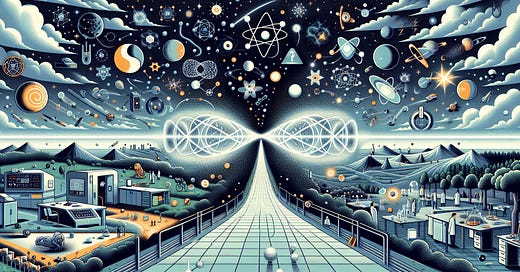



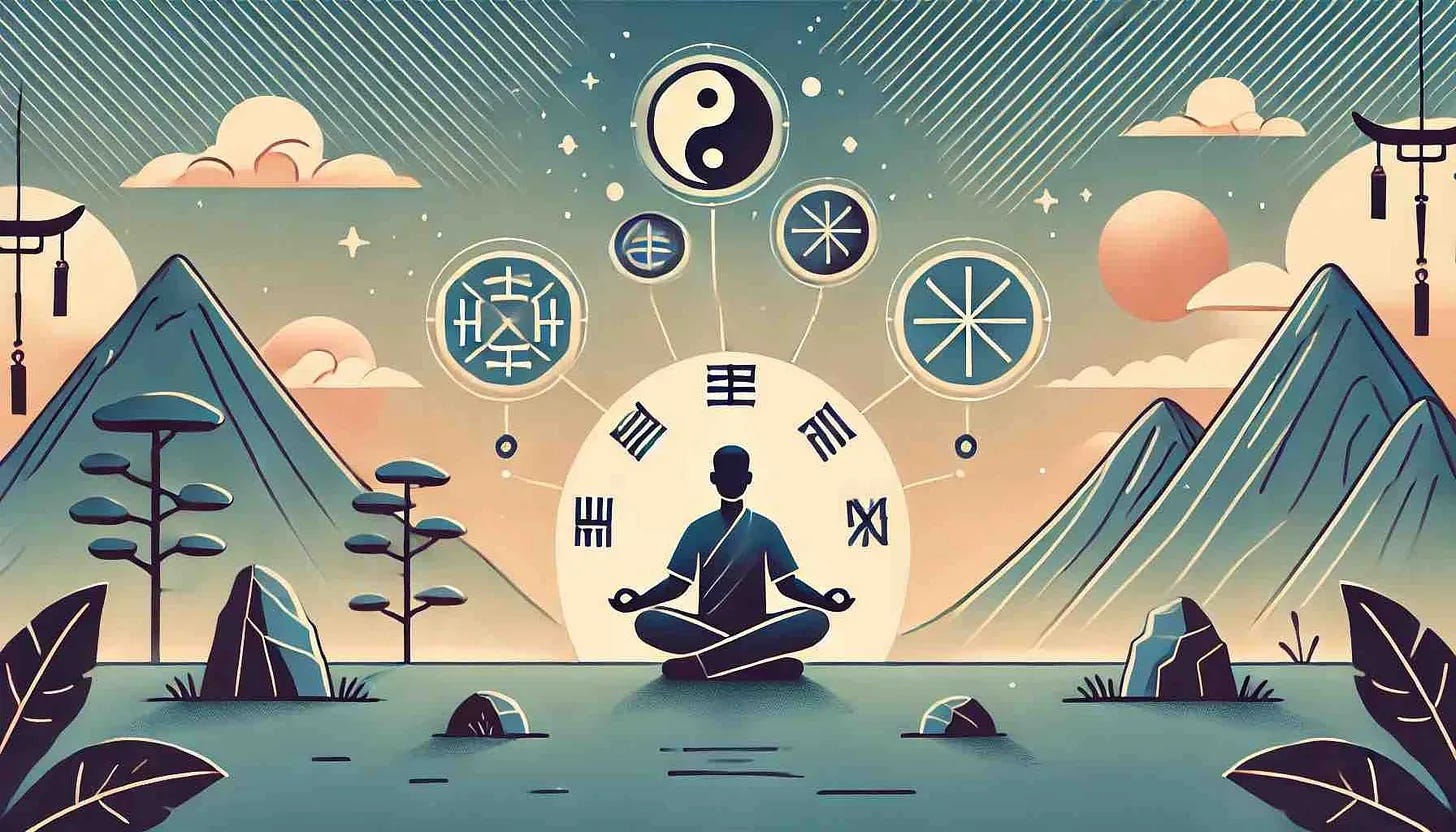
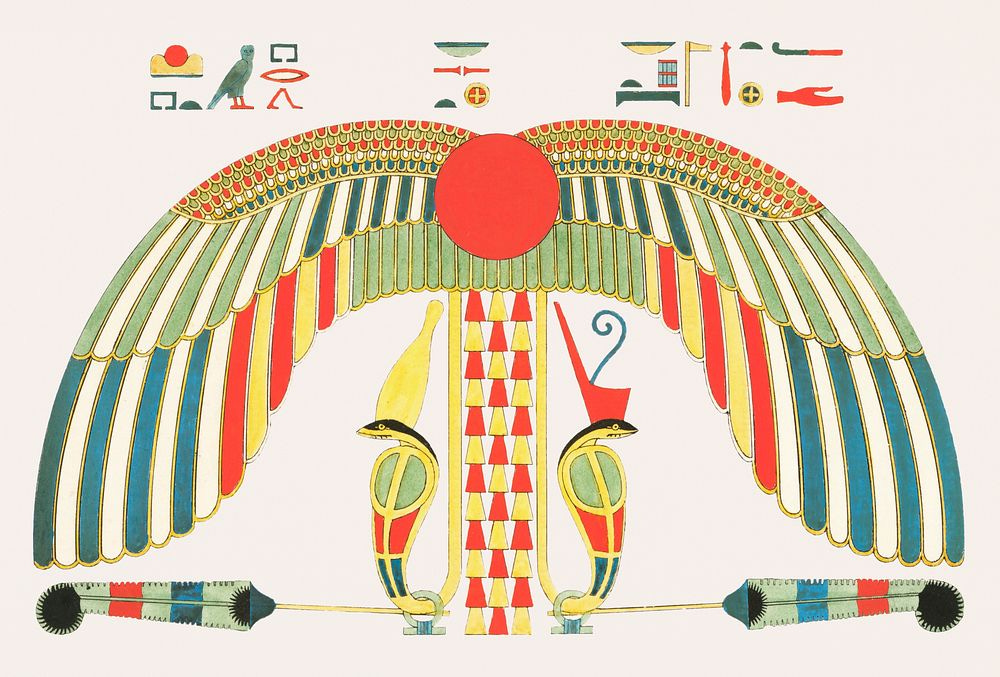
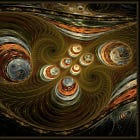
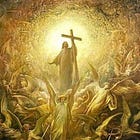

The best of culture (what man has done, is doing, will do) guides us beyond the grifts and shills towards reality. The miracle of birth, and on top of that consciousness, are more than enough when not buried in forprofit BS to the point of disgust. A simple practice of gratitude infused conscious breathing, deep listening to the internal and external signals we sit between, gets us anywhere we need to be. Nature/God/Reality are infinite, as are we. And yes, our energy impacts all of this, which is why we all benfit from each others practice.